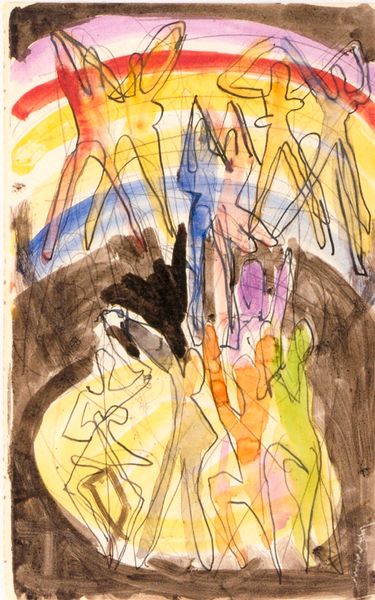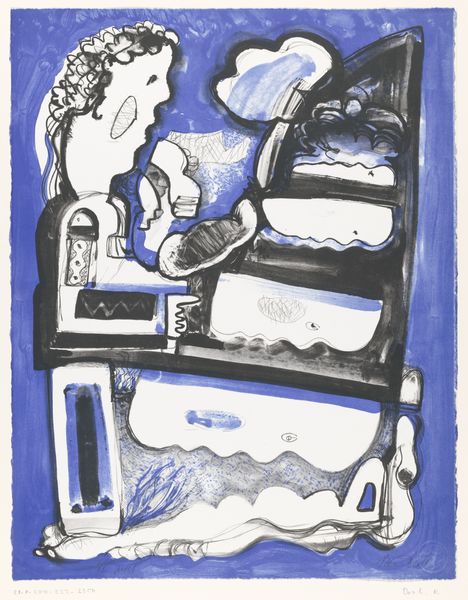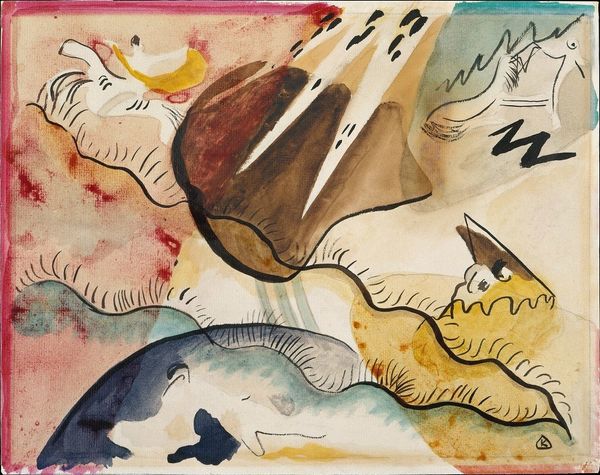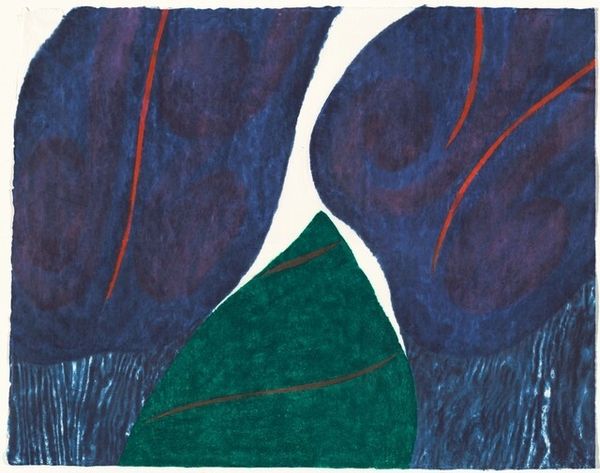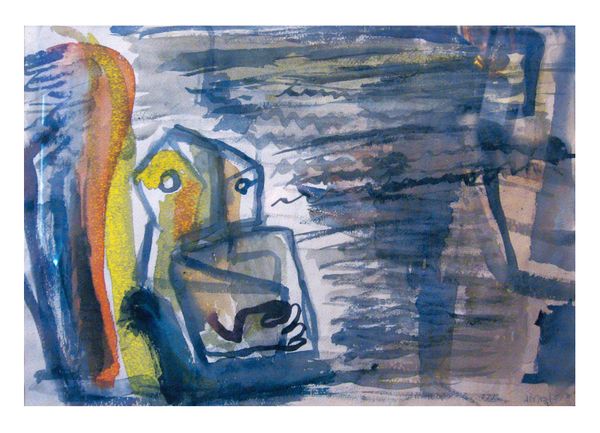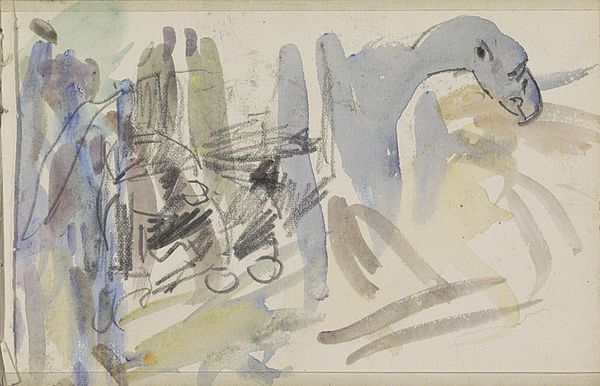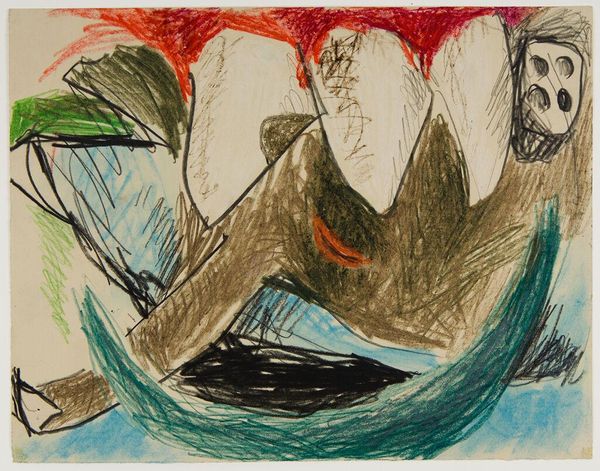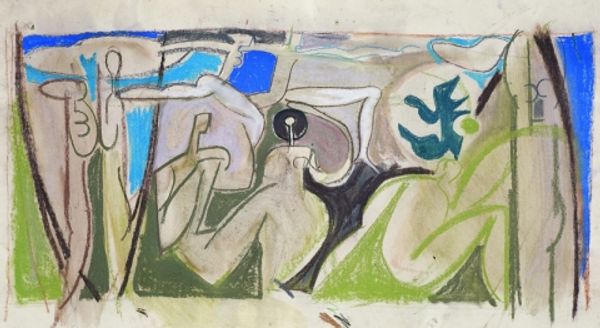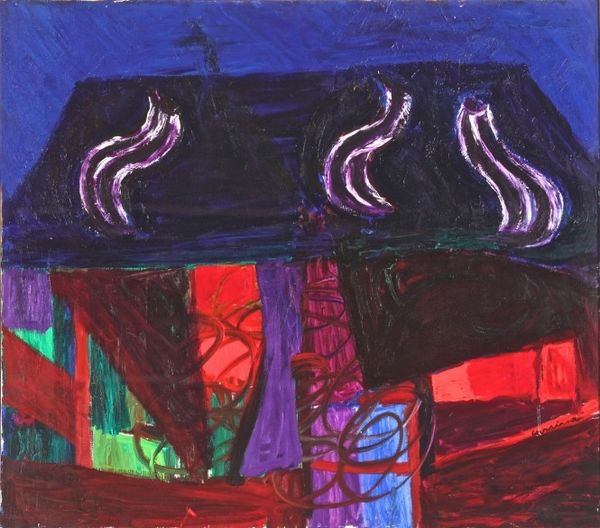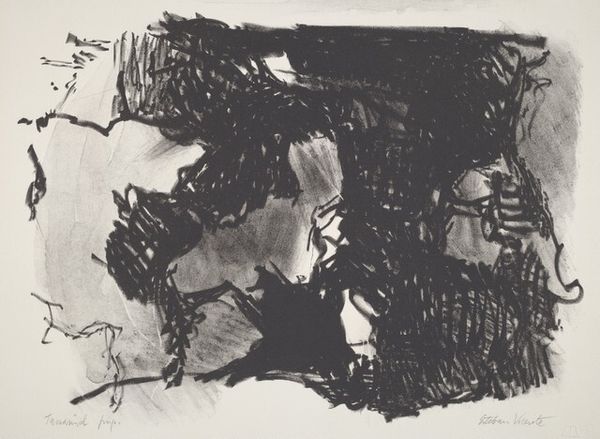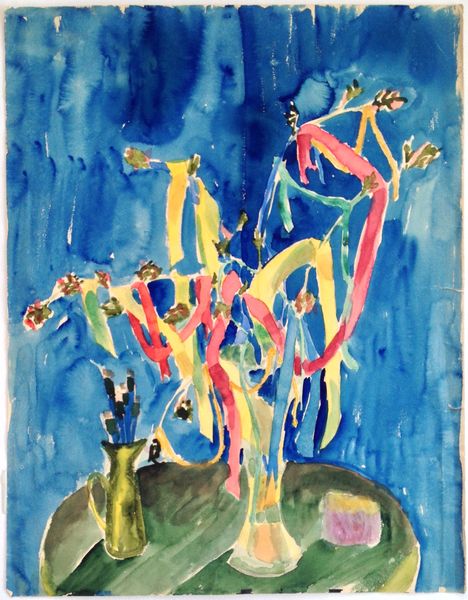
watercolor, impasto
#
landscape
#
winter
#
german-expressionism
#
figuration
#
watercolor
#
impasto
#
mountain
#
expressionism
#
abstraction
#
watercolour illustration
Dimensions: 28.2 x 42.8 cm
Copyright: Public domain
Curator: Ernst Ludwig Kirchner's "Snowy Landscape," created around 1930, strikes me as both desolate and incredibly stark. There's a chilling stillness here, almost as if time has stopped. Editor: Desolate, yes, but look at the bold use of watercolor. It's anything but still. Kirchner doesn't just represent a landscape; he builds one, layer upon layer. Look at the impasto – how does that affect the flatness often assumed for works of this medium? Curator: I think that impasto hints at the sheer physicality of surviving in that landscape, particularly for a German artist working between the wars. It’s difficult to view any landscape made during this era divorced from political and socioeconomic turmoil. Is this isolation or a desire for distance from an ever-encroaching ideology? Editor: It certainly is a physical piece, the materiality contributes to that emotional heaviness. And yet, it's still watercolor; how do you interpret Kirchner selecting, then manipulating, that as a medium to convey his response to landscape? The speed of application? The staining and translucency of layered color? The relationship to craft practices outside traditional oil painting? Curator: All those choices have meaning. Consider also Kirchner's increasing physical and mental struggles at this point in his life; you have the very real, tangible medium meeting what became a deeply internalized anguish, a symbolic dialogue of how suffering and endurance play out in the modern body within the constraints of expressionism. Editor: That's insightful. By examining its materials and methods, and the act of its construction, we gain access to the historical record and the artist's intent and physical experience during a pivotal moment in modernism. Curator: Exactly. Ultimately, Kirchner gives us a landscape imbued with the layered experiences of personhood at that moment in time, a testament to the way identity and place inform one another during profound upheaval. Editor: And in his commitment to working the material and experimenting, he transcends simple representation, allowing the work to function as both an act and artifact, where physical creation intertwines with psychological landscape.
Comments
No comments
Be the first to comment and join the conversation on the ultimate creative platform.
